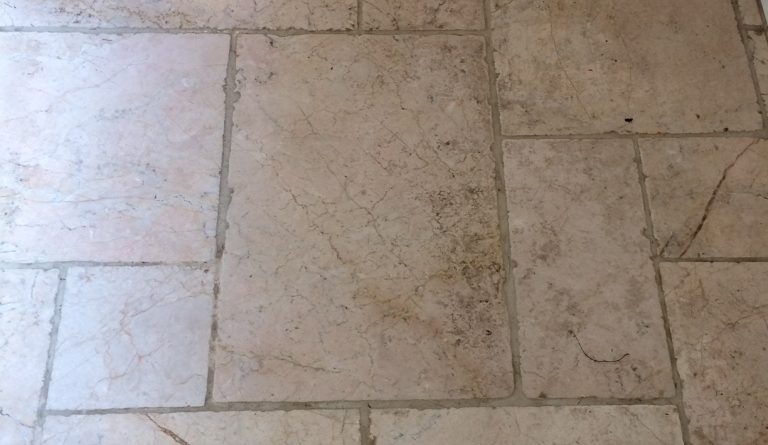Deep Cleaning and Polishing a Marble Tiled Kitchen Floor
When you have high quality tiles like Marble, Limestone and Travertine, it’s even more important than normal to use suitable cleaning products. If, for example, you apply a slightly acidic cleaner to Limestone, it can cause severe, irreparable etching that significantly damages the appearance of the stone.
In a similar way, this customer in Penrith had been using an unsuitable wax-based liquid soap to clean her “Crema Marfil” Spanish Marble kitchen tiles. It had failed to prevent a heavy buildup of dirt, and had in fact darkened the stone, leaving it looking stained, unnatural, and all-around difficult to clean.
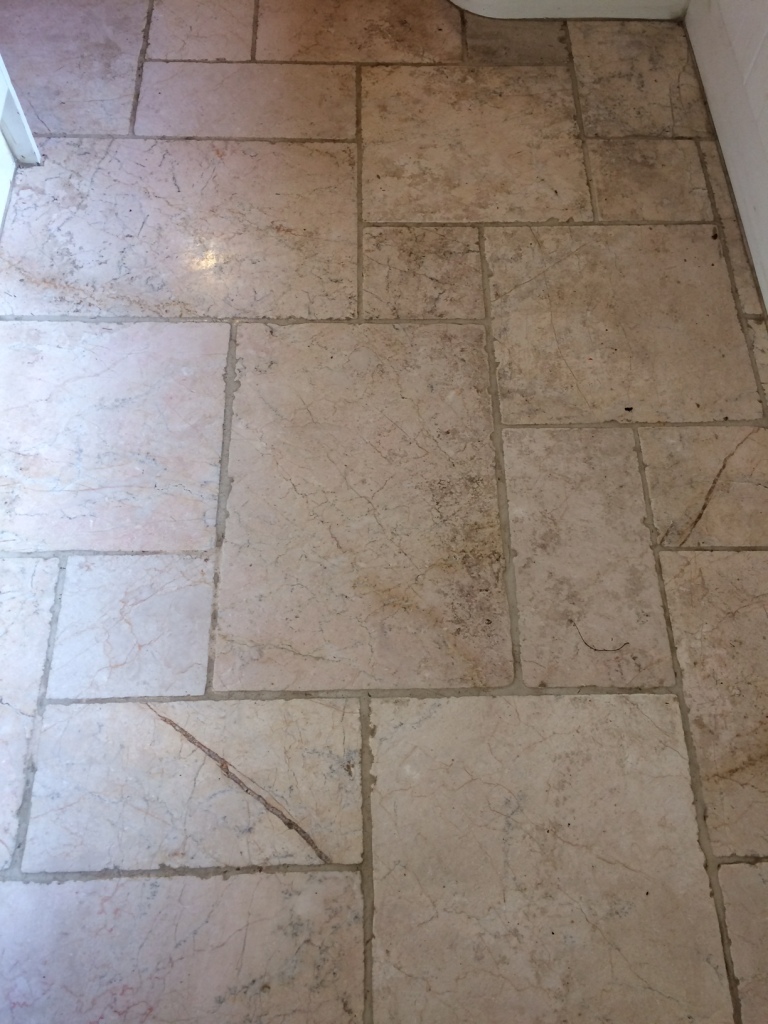
To avoid the floor becoming a complete nuisance, the customer contacted me to see what could be done to alleviate the problems.
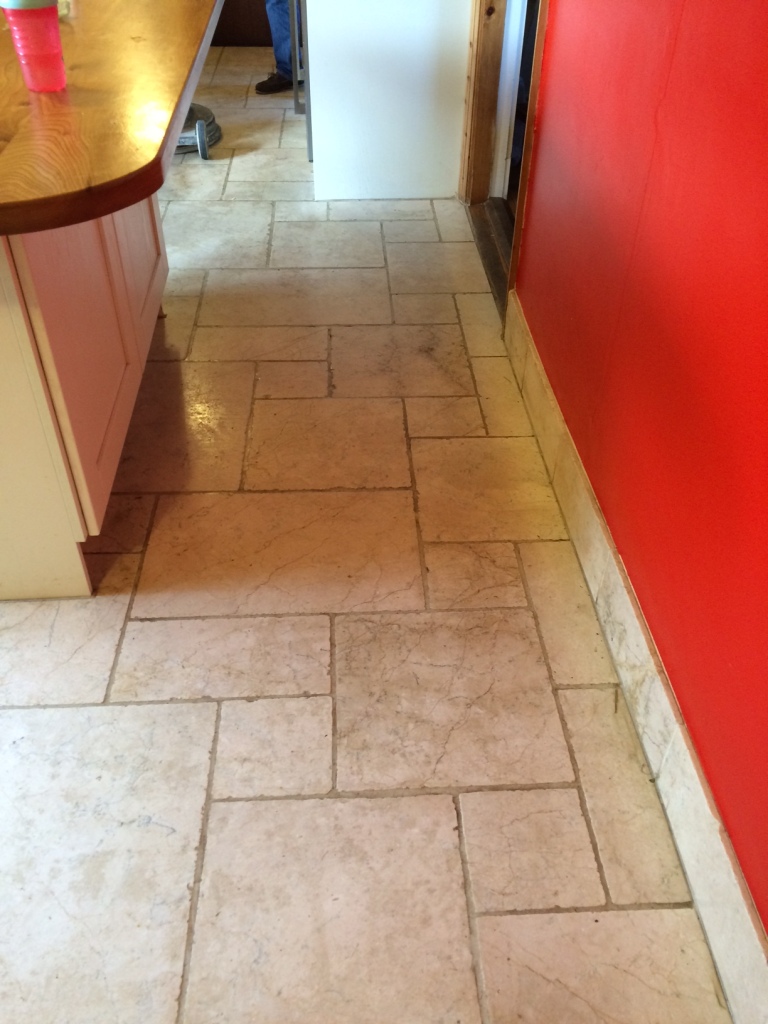 |
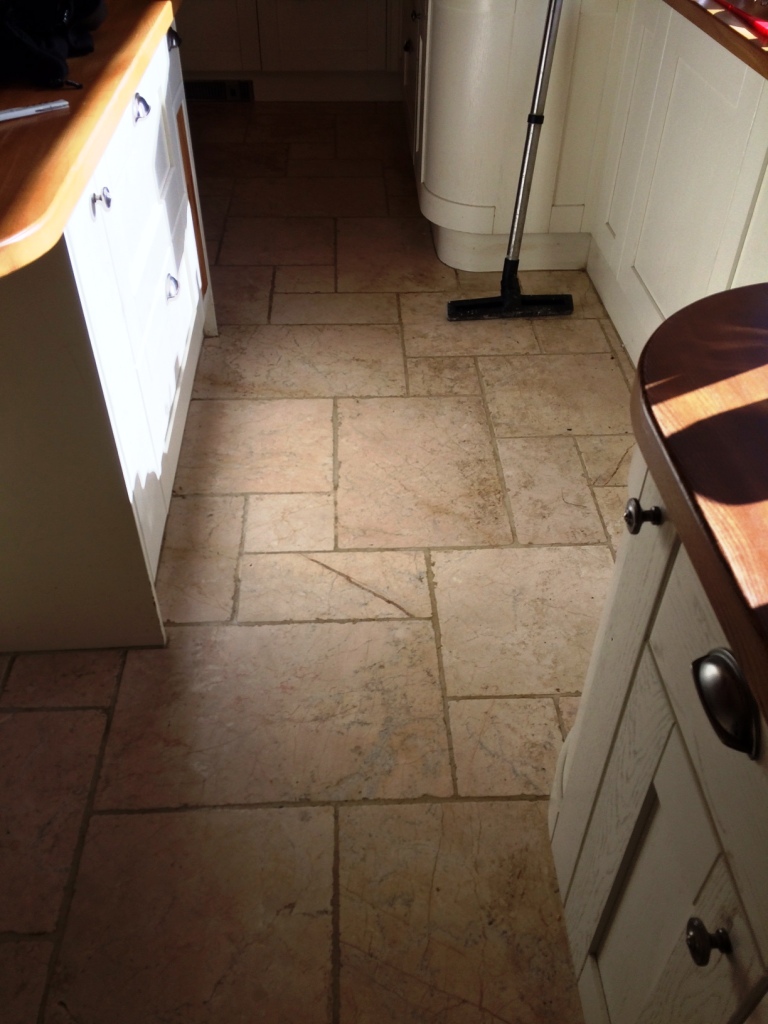 |
Burnishing a Dirty Marble Tiled Kitchen Floor
I explained to the customer that a process we use at Tile Doctor known as burnishing would be the most effective way to clean the Marble. Also suitable for Limestone and Travertine, this process involves the sequential application of specialist diamond encrusted pads of different grits to grind down any soil buildup and gradually create an aesthetic polish in the surface of the tiles.
Our system consists of four burnishing pads: Coarse, Medium, Fine and Very Fine. I started, using a little water as lubrication, by applying the Coarse pad across the floor, as its rough grit is ideal for breaking down stubborn dirt and stains – and doss so without damaging the tile in any way.
Satisfied with the initial cleaning result achieved by the Coarse pad, I proceeded to work my way through the four burnishing pad system, applying the Medium, Fine and Very Fine pads in turn to restore the polish to the tiles. Following this, I paid some specific attention to the dirty grout, cleaning it with our reliable, multi-purpose alkaline cleaner, known as Tile Doctor Pro Clean, in combination with a steaming system.
Sealing a Marble Kitchen Floor
After completing the burnishing process, I left the tiles to dry overnight. Upon my return to the property I polished the floor one final time with the Very Fine pad before deciding that it was time to give it a fresh seal.
My choice of sealer in this situation was Tile Doctor Colour Grow, an impregnating, colour intensifying sealer that I knew would really do well to emphasise the natural beige shades in the Marble. I applied two coats of the sealer, before polishing off the excess with a buffing pad and leaving the tiles to dry again for a few hours before they could be walked on again.
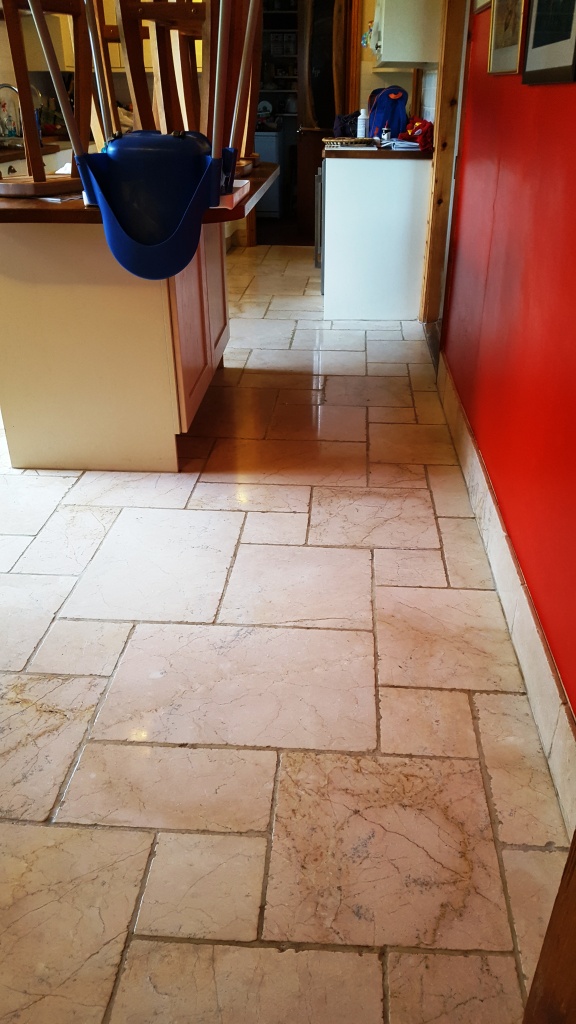
My customer was very pleased with the outcome. Naturally, she was drill quite concerned about keeping the tiles clean in the long term, so I left her with a complimentary bottle of Tile Doctor Stone Soap, which is specifically designed for aftercare cleaning on polished Marble, Limestone and Travertine.
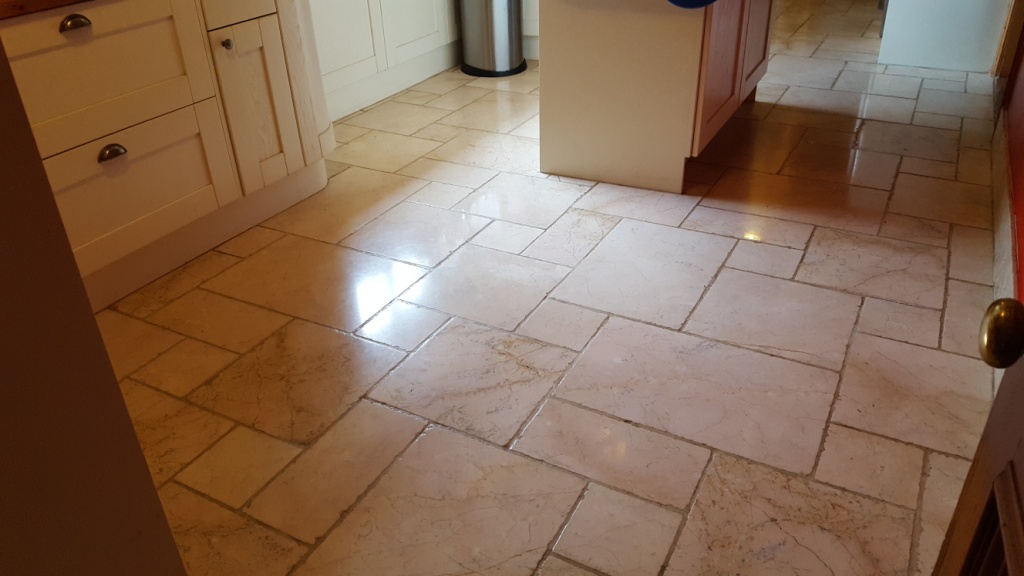 |
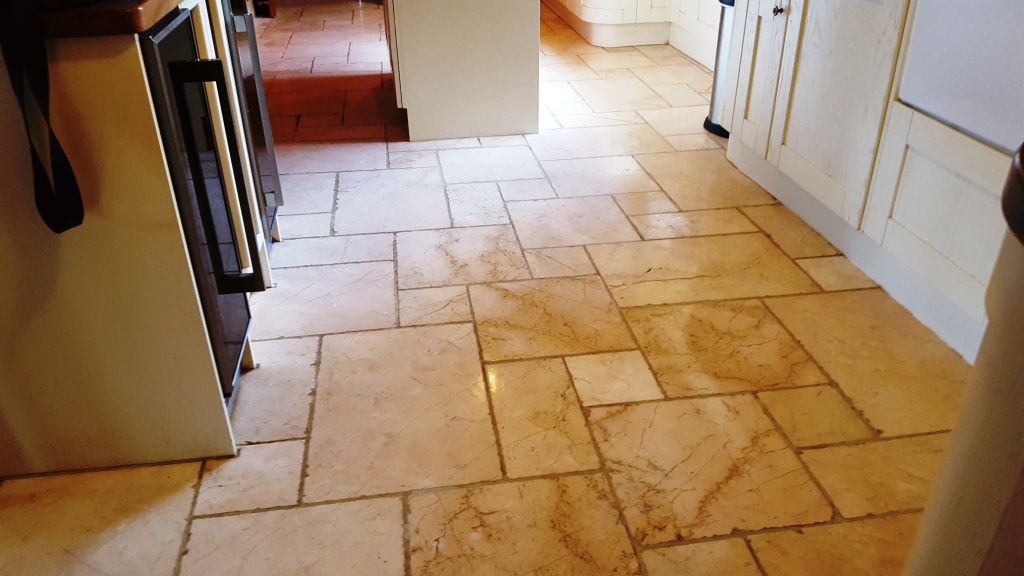 |
Source: Marble Tile Cleaning and Restoration Service in North Cumbria
